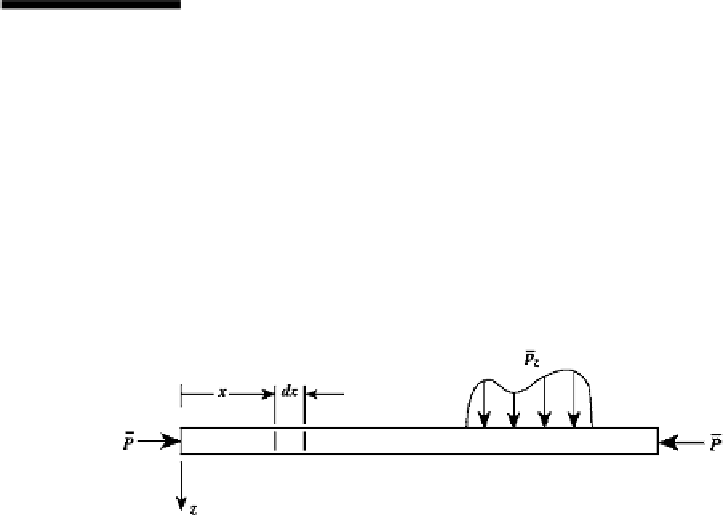Information Technology Reference
In-Depth Information
•
Stability behavior: Behavior of the critical characteristic (change of displacement) due
to the disturbance. The level of the characteristic is selected such that it should not be
exceeded.
•
Undisturbed state is stable: The critical characteristic (change of displacement) does
not exceed the criterion level fixed, for example, by design code. Otherwise the system
is unstable, (the limit being the critical load).
In the first step, a fundamental state of the system is defined. Imposing a disturbance on
this fundamental state leads to a neighboring disturbed state. Then a characteristic property
is established that appropriately describes the stability problem. For this property, a measure
is defined that should not be exceeded. In observing the transition to the neighboring state,
the stability or instability of the system can be assessed.
With the selection of the critical characteristic, the general stability criterion is specified
and can be applied to a structure. It is, of course, necessary to utilize a structural analysis
to determine the behavior of stability characteristics of a structure.
It is to be noted that this criterion applies for the investigation of stability for perfect as
well as for imperfect structures. The stability concept thus is not restricted to the bifurcation
of equilibrium cases (Leipholz, 1968).
For a complete treatment of the stability behavior of structures, a fully nonlinear inves-
tigation is necessary. This is not covered in this topic. Here, the presentation is restricted
primarily to structures composed of one-dimensional members with in-plane loading and
to the so-called theory of second order. Approximate methods can be employed to include
the most influential nonlinear effects due to imperfections. As a special case, the homoge-
neous solution, i.e., the determinant set equal to zero, leads to the eigenvalues and provides
the bifurcation level.
11.2
Local Equations for a Beam Column
11.2.1
Definition of Transverse Forces and Longitudinal Forces
Stability analyses of structures are, in general, based on nonlinear characterizations of the
problem. Therefore, in the formulation of the basic equations, the choice of the reference
configuration plays an important role. The variables need to be referred to the deformed
or to the undeformed configuration.
In the case of a beam problem (Fig. 11.5), stresses and stress resultants are usually defined
with respect to the cross-section of the deformed structure, whereas the displacements nor-
mally are measured with respect to the undeformed configuration. Therefore, in addition
FIGURE 11.5
Beam column.










Search WWH ::

Custom Search